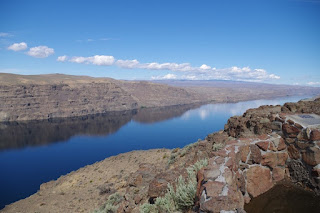Columbia River Basalts and the Genesis Flood
In architecture, entablature is that area above the columns and below the roof, often found in classical buildings. The word has a slightly similar meaning to geologists. It involves basalts cooling from magma underwater, forming above what are termed colonnades.
This may seem unrelated, but up yonder in the Northwestern (formerly) United States, the Glacial Lake Missoula flood that carved out the Channeled Scablands plays a big part in the upcoming discussion. Not only did it make the Channeled Scablands, it revealed some of the volcanic basalt.
 |
| Columbia River, Pixabay / kxp13 |
Many basalt lavas have particular cooling textures, such as columnar jointing that makes vertical hexagon-shaped columns. Some textures can indicate whether the lava erupted underwater. . . .The Columbia Plateau lavas also have flat tops and bottoms, with no indication of erosion or vast time between the flows. The tops of many flows are filled with gas holes and are often glassy. Some flows are pillowed, especially on the edges. Pillow structures (rounded spherical shapes) only form underwater, indicating that water was covering the land.Another significant texture called entablature verifies that many of the lava flows were cooled by active flooding. Entablature has an irregular curvi-columnar or wavy-distorted fracture pattern . . .
The entire article can be found at "Entablature Reveals Flooding of Columbia River Basalts."